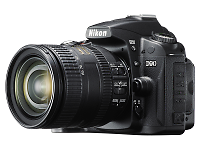High-End dSLRs Sales Drop as Phones Cameras Get Better
 Will expensive dSLR cameras go the way of buggy-whips?
Will expensive dSLR cameras go the way of buggy-whips?
Smartphones Destroying High-End Camera Sales
Information Week – “Smartphone makers such as HTC, Nokia and Samsung have made it a point to build powerful cameras into their mobile devices. Many of today’s leading smartphones offer not only high megapixel counts, but astounding software that lets them shoot in a wide variety of different modes. The appeal of camera-equipped smartphones has led to a decline in point-and-shoot camera sales for some time. Now it appears that these uber-devices are impacting sales of high-end, professional cameras, too.
Research firm IDC predicts that shipments of what it calls ‘interchangeable-lens cameras’ (or dSLRs) will drop 9.1% from 19.1 million last year to 17.4 million this year. At the same time, Canon and Nikon, the leading dSLR makers, have been forced to lower forecasts for the year. Further, Tamron, a third-party maker of lenses, saw shipments slump by as much as 22% during the first three quarters, according to The Wall Street Journal.
‘We are seeing tough figures at the moment, but I don’t think this will last forever,” said Nikon Chief Financial Officer Junichi Itoh. ‘There still is potential demand, and I think China is the key.’
Tamron knows it is in trouble. ‘Smartphones pose a threat not just to compact cameras but entry-level dSLRs as well,’ said general manager Tsugio Tsuchiya. Nikon and counterpart Canon blamed the slower shipments on a weak global economy, but that’s not the only factor at play.
In July, Nokia announced the Lumia 1020, a smartphone that boasts a 41-megapixel PureView camera. The camera features lossless zoom and controls that often match those of dSLRs when it comes to adjusting the behavior of the camera. Nokia has made no secret of the fact that it wants its powerful smartphone cameras to set Lumia-branded smartphones apart from the competition.
Last month, Apple introduced the iPhone 5s with an 8-megapixel camera. Apple took pains to improve the camera with a wider aperture and more sensitive sensor. The same is true of the HTC One, Samsung Galaxy S4, LG G2 and other top smartphones. Many of these device manufacturers pitch their phones as replacements for stand-alone cameras.
The phone makers aren’t alone. The app economy has risen to support smartphone-based imaging. Consider Yahoo’s Flickr. It has revised both its Android and iOS apps in the past 12 months and offers customers 1 TB of online storage for free. Then there are apps such as Instagram that make editing and sharing picture fun and social. Social networking sites, including Facebook, Google+ and Twitter, all place a premium on posts that include images. All three have worked hard to make it easy to share images online from smartphones. Combine good cameras with appealing software and the easy portability of smartphones, and you have a recipe for disaster as far as dSLR makers are concerned.”